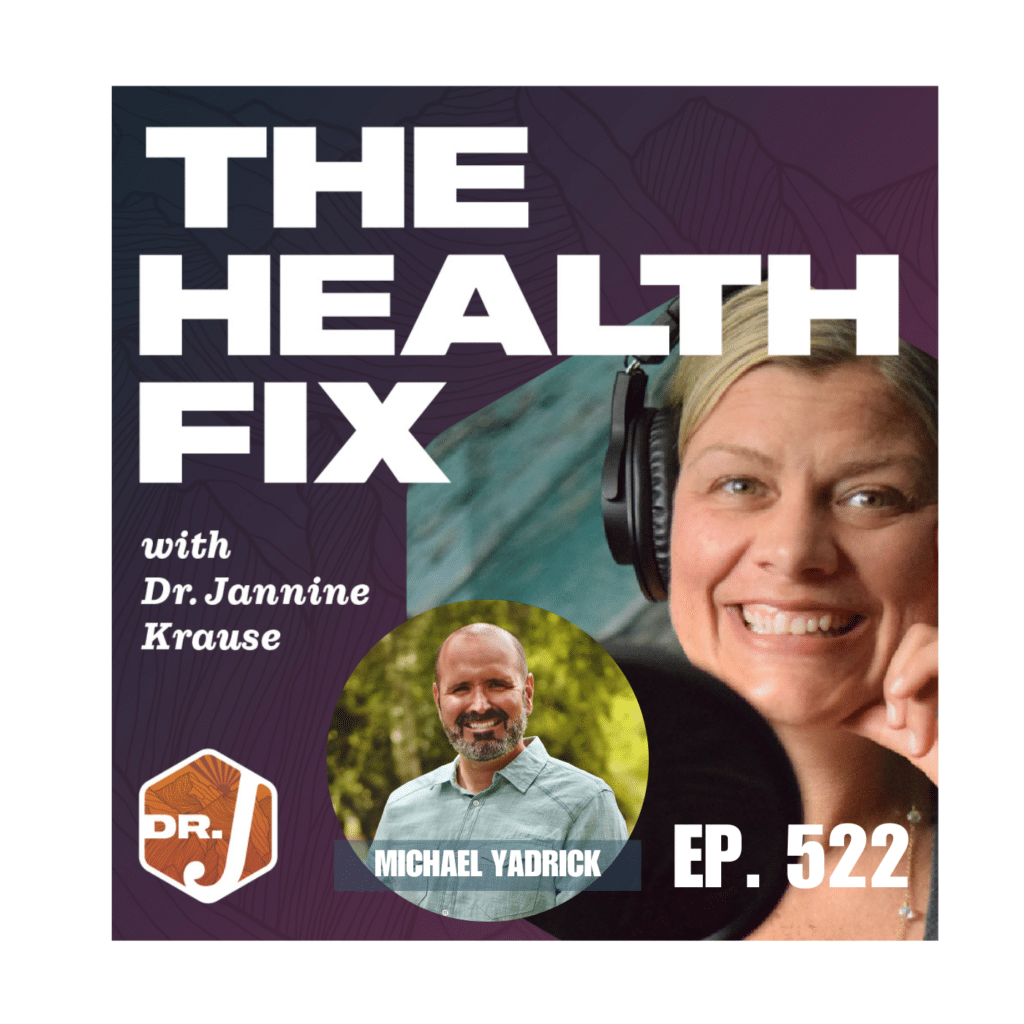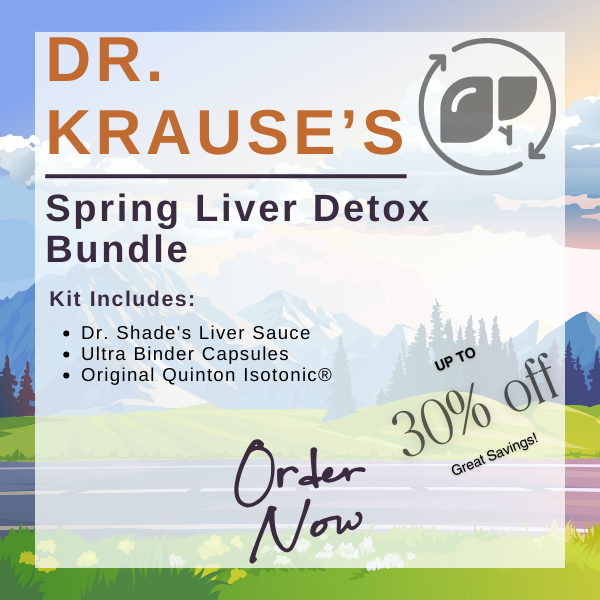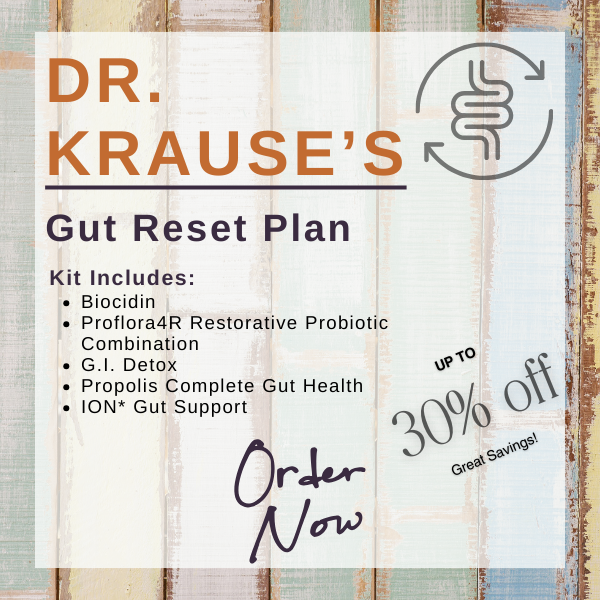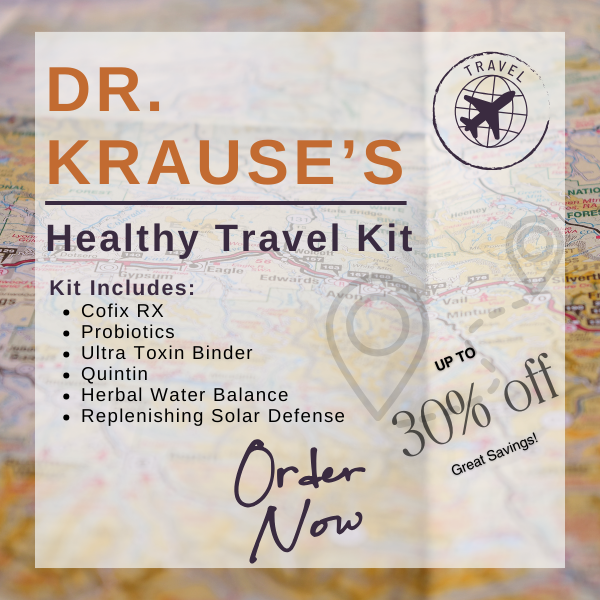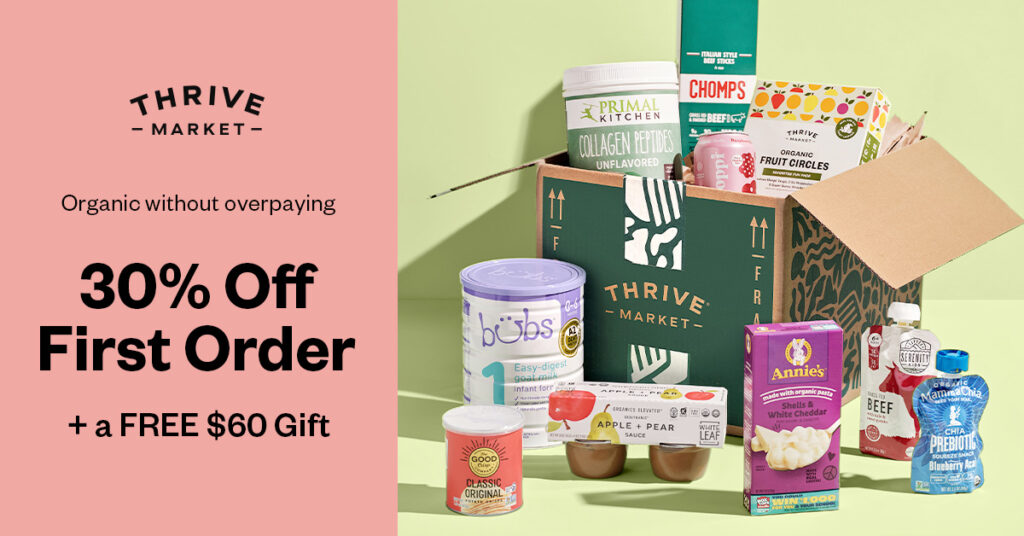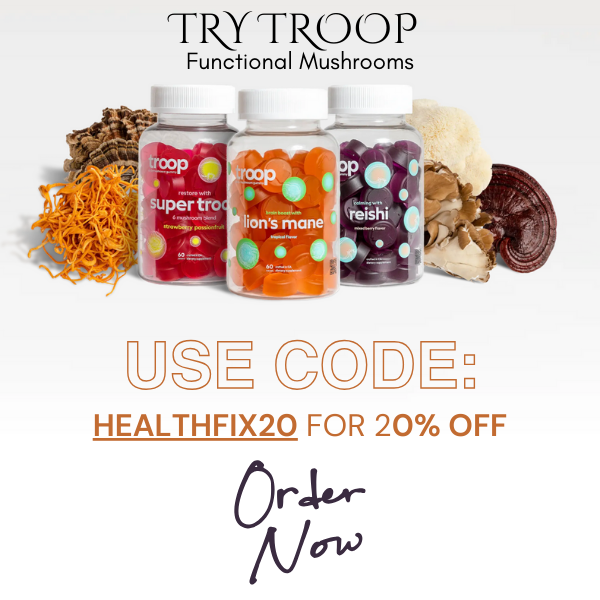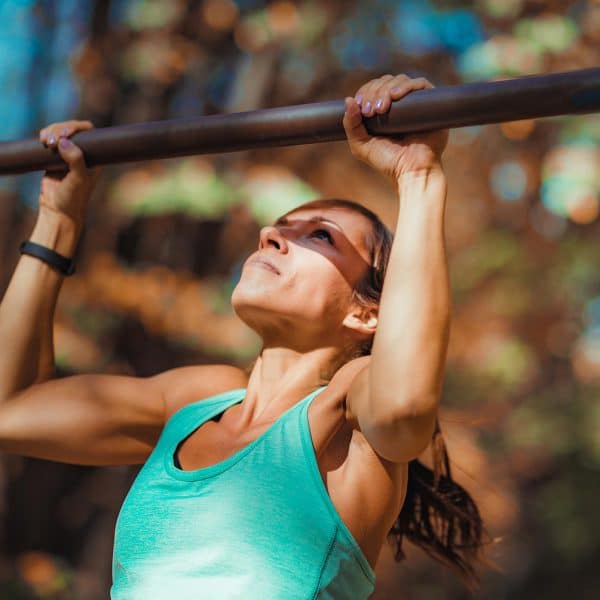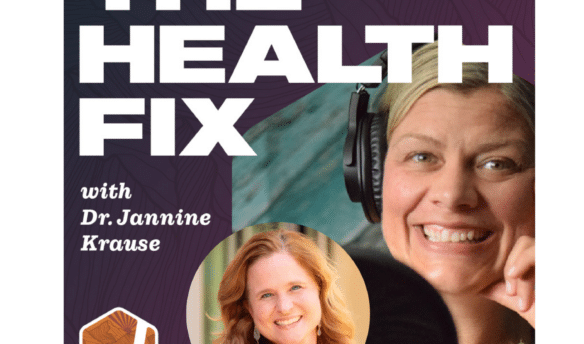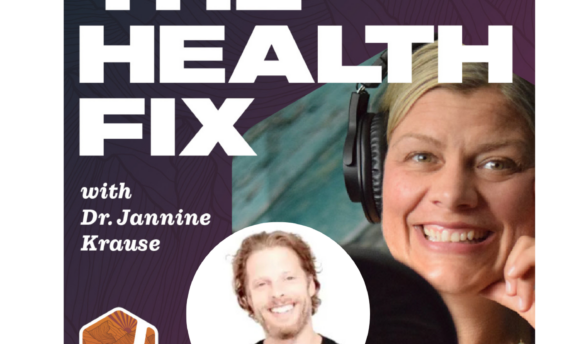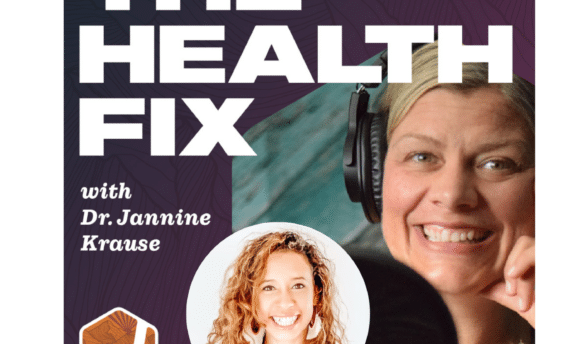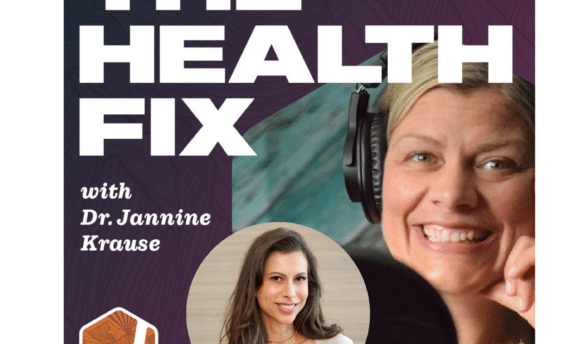🌱 Curious about herbal medicine and how to start using local plants and herbs? In this episode, Dr. Jannine Krause chats with Michael Yadrick, a restoration ecologist and host of The Tree Hugger Podcast. Michael shares his love for plants, insights into herbal medicine, and how invasive species in the Pacific Northwest can be medicinally beneficial.
Dr. Krause’s Protocols
Instructions Included
Traveling soon? Looking to detox or reset your gut? Try one of Dr. Krause’s Fullscript plans.
What You’ll Learn in This Episode
💊 Michael’s Herbal Medicine Cabinet:
- Sleep: Blue Vervain, Hops (sedative/hypnotic properties)
- Immune Boosting: Cloves, Fir Needles
- Devil’s Claw: Supports boundaries & reduces inflammation
- Oregon Grape Root: Rich in berberine, antimicrobial, great for gut health
- Hawthorne Berry: Heart health support (or is it Tree of Heaven?)
🌾 Invasive Species in the Pacific NW with Medicinal Benefits:
- Salal: Floral arrangement greenery with medicinal potential
- Blackberry & Ivy: Environmental clean-up powerhouses
- Japanese Knotweed: Contains resveratrol (used in Quicksilver Scientific’s Crypto Co-Max)
- Milk Thistle: Detoxes the liver, lowers liver enzymes
- St. John’s Wort: Helps detox at a cellular level
- Tree of Heaven (Altissima): Creates canopy and offers medicinal potential
Resources from the Show
🩺 Michael’s Mentor: Sarah Butters (Hawthorne and Honey) – hawthornandhoney.com
🌿 Environmental Education Resource: Just Language – Rethinking the language around “weeds.”
🌳 Tacoma Tree Foundation: tacomatreefoundation.org
🎙️ Michael’s Podcast: The Tree Hugger Podcast – treehuggerpod.com
🎧 Tune in to learn how to harness the power of local plants, rethink invasive species, and explore the rich world of herbal medicine!
Our Partners
Podcast Transcript
TAGS: Alternative Medicine, Chinese Medicine, Natural Medicine, Holistic Medicine,
6:06 – Michael’s background
12:55 – Oregon Grape plant
19:31 – The benefits of invasive species
23:32 – Particulates
24:48 – Ivy
29:08 – Other “invasive species”
40:48 – Plants blooming twice in a season
45:27 – Species making a comeback
48:45 – Salves
55:54 – Edible plants for the yard
103:52 – Where to find Michael online
[Preview] With the mesa species, we often just think that, you know, they’re taking over and they become over abundant.
That’s the word. I choose to use a lot of times. They’re just like not teen players, right?
So they have, yeah, they sort of push out other plants that we want there.
They’ve been brought over for whatever reasons like Blackberry was brought over because it was like an erosion control.
Because bird habitat because of the berries, it’s aesthetically pleasing as well.
But we just stopped, many people I think stopped using it for some medicinal qualities as well.
So we’ll always take the berries, like everyone loves those berries, you can make like cobbler and
pie out of it, but also that leaves can be used as teas and the roots are actually can be
tinctured as well and it’s very important from what I understand for like like diarrhea and like
kind of gut health and you know a lot of the plants I have in here the pathos you’re in
cleaning the air right now it’s not just the plant doing the work but the interactions with the soil
and the fungi I talk about like a plant when it shows up in abundance perhaps there’s a reason
for it, right? It sort of signals perhaps that we need that plant for whatever reason. And plant
populations, you know, year by year, if you go and observe like the plants in your nearby park or
in your neighborhood, like some years they’re there, some years they’re not. [Intro] Welcome to the Health
Fix Podcast where health junkies get their weekly fix of tips, tools, and techniques to have
limitless energy, sharp minds, and fit, physiques, or life.
JANNINE: Hey, health junkies.
On this episode of the Health Fix Podcast, I’m interviewing a pal of mine from Tacoma,
Washington, Michael Yadrick.
And we’re going to be talking about herbal medicine.
We’re going to be talking about what’s local in the Pacific Northwest that we can use for
herbs, so things you might be able to find in your backyard.
And even if you’re not from the Pacific Northwest, we’re going to be talking about a lot of
herbs that are considered weeds pretty much everywhere.
So things like milk thistle, things like blackberries, things like Japanese
not weed.
These are all things that are considered invasive species.
So weeds, but they’re actually really, really helpful.
Things like molin, chickweed, they grow as weeds, but we can use them for
sabs and all kinds of fun stuff.
Now, the cool part about Michael is he’s a certified ecological restoration practitioner,
otherwise known as a restoration ecologist. And he runs the native plant nursery for the city of
Tacoma. He works in the city Tacoma. And he’s also the host of the tree hugger podcast. And he
self describes himself as on team tree, which is fun because Michael can be found into coma in many
of the parks, figuring out how he can help with the landscape. But not only that, he’s really
into preserving native plants.
And some of them may be a little bit considered weeds
and invasive species,
but we’re here to talk about how cool they can be
and how we can use them as medicine.
I think you guys are really gonna enjoy this podcast.
It’s Michael and I sitting down
and just having a really great chat at his house about herbs.
All righty, let’s get into the podcast.
Hey, health junkies.
I have Michael Yadrick on today
and because I’m in Tacoma and he’s in Tacoma.
We decided we just joined together and hang out
’cause I mean, he’s got a podcast,
the tree hugger pod, we’re gonna talk about that.
And today we’re just sipping on some tea,
well, he’s got coffee.
And then he experimented, he told me full disclosure,
this is what lemon cholote and you never tried it.
MICHAEL: I’ve never tried a friend of mine gave it to me
and I expect it’s gonna be delicious.
JANNINE: It smells good.
– Smells good.
So we will see about that as we get going here and yeah.
MICHAEL: alright.
JANNINE: This is fun.
It’s fun to do these in person.
So I think a lot of times we’re doing podcasts
across the country and we, you don’t get to see people.
And so sometimes in person, there’s just a different vibe.
So we wanted to bring that to you guys today.
MICHAEL: Right.
Yeah, I like recording outside a lot.
And obviously that’s a good fun one too.
We started talking about free styling it
or like free-range podcasting.
But I do feel like, yeah, recording,
I feel like you have a worldwide audience as well.
I know there’s people with accents
that are off and on the show too.
So virtually it’s probably the only way to go.
JANNINE: With some, but I mean–
MICHAEL: Unless you want to fly them in from wherever.
JANNINE: That or like podcast travel.
I mean–
MICHAEL: Yeah, when we hit it big.
JANNINE: Yes, yes.
We’re fledgling podcasters at this point.
MICHAEL: When I hit it, you’re big.
I give a big following.
Regular schedule.
JANNINE: Well, we try and try.
We’re trying to drum up some more folks from Tacoma,
by the way. So if you’re from Tacoma, let us know. We want to know about this.
So today we’re talking about plants. We’re talking about invasions.
I can refer to free. Sure.
Maybe the teal helped me say things better.
But here’s the thing. Like, and you probably can back me up on this is that.
We we have all these parks with all these cool plants.
And we’re trying to rip all the cool plants out and then say we’re going to
restore the park. But most of us think about restoring a park. Don’t don’t walk
on the ground. We see the signs that say don’t walk on, right?
Like we’re restoring this, I see Prairie a lot.
It’s not like we’re restoring this Prairie. I don’t walk on it.
And so kind of cool because they’re not really ripping things up.
But I don’t know at the same time.
So let’s let’s tell the folks like in Tacoma, you you’re taking care of lots of
parks over here. You’re trying to beautify the city, trying to figure things out.
but you’re also an herbalist at the same time now. And so he’s learning about herbs and what is
like incredibly useful. So tell us a little bit more.
MICHAEL: Yeah, I’ll tell you a little bit more about
me, I guess. So I’m a certified ecological restoration practitioner, mostly like I kind of have a
botany background. I call myself a restoration ecologist. That’s my working title. I’ve also,
I’m interested in globally, like everything, teen tree, like this, this, the street trees as well,
this trees in people’s yards. Like obviously, we live in an urban forest. It’s hard to say,
like, you know, we, there’s actually lots of, there’s trees around it. So we consider this a forest
as well. But often, I think more important to me as well recently, has been the restoration of
of like cultural values as well.
And the medicinal qualities of things.
And that was a growing,
it’s been a growing interest, kind of a pandemic project,
but I did, yeah, just a couple years ago,
I started this apprenticeship with a local herbalist.
And yeah, I felt like it was really important
not just to know about different values of plants
for like what holds the soil in place,
what provides habitat for certain animals,
but how we use it, how we use some of these plants as well.
And, you know, I’m interested in my own health
and I have had my own health struggles.
So I think a lot of plants are, yeah, can be really important.
Like we all go, have to go to the drug store sometimes
or many of them, not you.
– Sounds like,
some of us go to the drug store sometimes.
And I’m not saying that’s not important,
but I think it is helpful to be autonomous
in our healing as well and be able to interact
with our environments.
JANNINE: Absolutely, absolutely.
Guys, I’ve seen Michael transform
over the last like, it’s been like three years really.
Where, you know, we would have conversations about herbs
and in my office and we’d have, you know,
different things we were working with for Michael’s health.
And then all of a sudden he was like,
“Hey, I’m working with the herb list.
“Try these herbs out that I made myself,”
which is, I mean, herbs that you made,
he didn’t make nature, made the herbs,
the tinctures he made.
And so he’s got a whole cabinet here at his house,
which is really cool.
I’m in for us.
And so he’s talking about a pharmacy, right?
And some of us have to go to the farm store,
drug store because things happen.
I don’t have things, but having a cabinet
that can cover a lot of your bases,
tell us a little bit what’s in that cabinet there
like that you can cover bases.
‘Cause I know there’s a ton in there,
but like what’s like, what are your like top five go-to herbs
for like stuff that maybe someone could have in their cabinet?
And then we’ll talk about how this relates
to invasive species and things of that nature.
MICHAEL: Yeah, so the herbalism I’ve been kind of getting into,
or at least that my teacher, Sarah Butters,
Hawthorne and Honey is a local herbalist in Tacoma. She really teaches the importance of intuitive
herbalism and then bi-regional herbalism, right? So, finding using plants that are around us,
that we find out in the yard or out in the mountains or by the shore of Puget Sound here,
as well as using plants, I think from like our ancestral traditions as well and things that just
for some reason we see them and we’re sort of drawn to them for whatever reason and not discounting
that. So it could be a plant that, you know, we many folks consider
invasive, but also some of these plants, there’s there’s kind of
re there’s probably reason for that that you’re drawn to that
plant for whatever reason. So in my cabin, there’s a lot more
down, there’s way more downstairs that you can’t that I haven’t
shared with you. But there are, I do kind of have problems
sleeping sometimes or getting to sleep. So there’s things that are a little bit sedative or maybe
heptotic. I think those are the herbal actions. So there’s…
JANNINE: Oh, okay. Blue vervein.
MICHAEL: Blue vervein,
yeah. That was gifted to me. We actually don’t really find this around too much. There’s some hops,
right? So interestingly, you know, when you drink alcohol, there’s hops in there. You might feel,
for some people who drink beverages, you know, hops make you a little sleepy. And so, and this is
the version, you know, the oil and alcohol in here, it’s tinctured. So that helps me get to sleep.
Ooh, the forest elixir, I mean, this does taste like Christmas, but there’s fir needles in here,
and then it’s mixed with cardamom, clove, cinnamon, brandy, and honey. And so I think this is really
like a more like a immune booster more than anything.
JANNINE: I mean, anything warming is gonna warm you up.
Like if it tastes like Christmas or tastes like pumpkin spice,
like if it tastes like Thanksgiving,
it’s gonna warm you up.
But for needles, I think a lot of people don’t realize
that they could use for needles to make something out of it
for your health, which is super cool.
MICHAEL: No, you never know.
And I didn’t, and these things like, you know,
when I was properly trained like in college or whatnot,
bringing this up, like, and you conceptually,
these things we use as food or people like, oh, you could
pour this in theory. But, you know, am I poisoning you or it’s
like, you know, it might be gross. But I think experimentation
is important. So the fur noodles, yeah, a lot of times you
can just pick them right off the tree and just stuff them in
your mouth. And yeah, a lot of the times they’re high and like
vitamin C or other nutrients. This one, the devil. Yeah, this
Devil’s Club, this is really powerful. I mean, it’s essentially like a
mythically kind of a heel all, but I do feel like not, um, can I get a little woo woo? Like it is,
it helps with boundaries a lot. And that’s what I’ve heard because Devil’s Club, it’s like
oplopanics word-ness, you’re into though, if you’re into the latte, names of things, but it’s uh,
It’s very important. At least you find it in the Pacific Northwest or up and down the West Coast into Alaska
that it has these spines on it, very sharp. And it’s like you don’t want to mess with it. You don’t
want to like wander through it pretty much. Like you use thick gloves to harvest it. And it’s so I think
yeah, having those spines on it sort of indicates that it’s good with its own personal batteries as
as well, right?
JANNINE: Like stay away.
And it makes sense.
It kind of has a club shape to it when you look at
how the spines are on it and maybe look at the plant
as a whole.
Now what’s fun about all of this,
and I think for me as a naturopath
and having a patient in mind that decides
that he wants to go into herbalism,
I’m like, this is so exciting.
Now he probably knows more than me.
So that’s what’s even cooler.
And in your making a tincture of Oregon grapefruit,
I’m gonna grab it, tell folks what Oregon grapefruit is.
MICHAEL: Oh, Oregon grape.
So organ grape, I first heard about it.
I mean, I’ve known about it for years.
That’s probably one of the dominant
understory plants in the forest here.
Like the long list salal and sword firms really.
So you see it everywhere.
But, and it’s often used like in landscaping as well.
So we talk about taking care of the parks
like the way we show care here is the plant,
a lot of native plants like on the edge
of the parking lots or whatever.
So you see it everywhere, but I know it’s heavy
with inberbering, right?
So yeah, I can see those like in capsules, right?
So I think it’s important for like regulating blood sugar
from what I understand, right?
– I think that’s one of the biggest things.
I think it’s also good for, yeah, your digestion as well
and kind of your gut health as well.
But so we use the, this is the tincture of the roots.
JANNINE: I don’t know if you guys can tell it.
That’s really cool.
Like herbs are impressive when you get them in there
and you get them starting to get into the teacher format.
MICHAEL: It’s important to label them.
Yeah, you just saw like the bottom part of it.
So you’re not really sure what’s in there,
but these are like strips of the root bark.
So essentially take a knife, clean all the dust
and dirt off and then just scrape the,
and you get the yellow,
you get, really see this very distinctive yellow color.
JANNINE: Well, this is great stuff.
I mean, Oregon grape guys also, you know, like Michael was saying,
we’ve got blood trigger balance for helping with micro balance.
So a lot of people are talking about SIBO and microv issues with the gut.
Helps with that brain fog from it.
And then it’s also in tight.
Like it is in time microbial.
If someone has an infection is used for years and years for infections,
but super cool stuff.
And, you know, there was a lot of talk back in the day about over harvesting and whatnot.
But I think here, I really don’t think we have that problem.
I mean, it seems like I see it quite a bit.
MICHAEL: We call it a workhorse plant, like it should be there,
like depending on the topography,
where you are in the sailors’ self
and in the sailors’ seat of the Puget Sound,
like depending on which slope, you know,
you’re facing west or east or north.
Sometimes you’ll see the dominance
in the understory change and it’s really fascinating.
Interestingly, it’s kind of hard to propagate
and really sometimes you can’t find it
in commercial nurseries.
Sometimes there’ll be just a glut of it,
mostly because there’s like this insatiable desire to have it in our landscapes, I think.
And so it’s just sold out. So thinking about going to the grocery store and like,
oh, all the toilet paper is gone or whatever, right? And it’s kind of the same thing with the
nursery. So that’s why I think it’s important. Part of my job is to run the native plant nursery
for the city as well. So yeah, it’s one of those skill sets that it’s, I think it’s a sort of a
lost art to yeah growing plants for ourselves.
JANNINE: It is. We don’t think about it because we think
about go to the drugstore and pick up the meds right or the doc prescribes the medication you go
pick it up but why don’t you have in your backyard on your counter in a jar. I want to bring that
back to folks I really think it’s important and you’re kind of working with the city here. I don’t
know how far you’ve gotten because I know we’ve talked back and forth about it about possible
chances of people being able to harvest and how to regulate that in terms of working in the
parks and the inspection.
MICHAEL: Yeah, regulation. I do feel like regulating harvest, I think a lot of
public land managers, they have the best intent to be the best stewards of the land. But it does,
we do live in this kind of, this really the settler state. So there are a lot of rules and a lot of
displacement of indigenous folks and so there’s a lot of practices that have been
like purposely back in the day and they still carry on today that really remove people from the
land right so it’s uh so best intent however and we’re not trained in it like I brought I got
brought up in it and I was like I was really into plants I was really into forests I don’t
I don’t want to be an ecologist, but we never learned how to really use the plants, except for,
let’s say, the bigger economic reasons. Like he’s drive through the Pacific Northwest,
you see like fields or mountains full of like Douglas fir and that’s traditionally been used
just for like two by fours in timber. And we know how to, we harvest plants for those economic
reasons or is he like Salal in the for Greens he’s Salal in the floral
decorations but we’ve never been trained to or we’ve lost it I guess from all these
generations I think they’re moving around from my ancestral tradition from Europe and across the
United States and we finally settled here we just don’t we’ve I think lost that connection
to know how to use the plants for a variety of things.
JANNINE: I believe we totally have and that’s
That’s what I brought Michael on here.
Now, Salao, let’s show folks Salao,
’cause I actually don’t know what it looks like
in my instill meeting.
MICHAEL: Yeah, there’s a little bit here.
Yeah, it’s just this green.
JANNINE: It’s a green, the greenery.
– The greenery.
– In your floral regions, it’s Salao.
Interesting, ’cause I didn’t know that.
MICHAEL: Yeah, it’s exporey.
I mean, a lot of them are, yeah, it’s, I guess,
kind of quote unquote, wild-crafted or whatnot,
but it’s a secondary forest product
that we pull out of the forest around here.
So yeah, and some of that too is rose leaf too.
So it’s a little deceiving,
but yeah, there’s a little bit of everything in there.
JANNINE: Hmm.
You know, we just don’t even think about it.
Like a lot of the different fillers in floral arrangements
can actually be made into medicine,
can actually be like a lily of a valley we use.
I mean, there’s lots of different things
and we not tend to think about it.
But I think one of the cool things about the Pacific Northwest,
if you guys have not been here,
I highly recommend visiting.
We have lots of greenery.
And like Michael said, it’s a forest.
We’re driving, for those of you from Tacoma,
we’re driving down North 30th on the way over to Michael’s awesome.
I was just looking at the trees coming over the road
and it’s just so beautiful.
But one of the biggest things,
and no matter where you live, right,
there’s always going to be some life that’s living in parts,
that’s going to be living maybe in your yard.
And one of them is like the big invasive species situation.
Now hearing of Pacific Northwest blackberries
are kind of like everybody’s enemy per se,
but blackberries have some really good benefits.
But we also have a couple of other things.
I’m going to let Michael talk a little bit more
about the invasive species that we can use as medicine,
but are getting demonized a little bit.
And maybe we want to rethink the weeds in our yard,
like dandelions and thistles and whatnot.
MICHAEL: Right. Yeah, so there are some, yeah, and a couple years ago is another pandemic project
I’ve been organizing with this group called Just Language. So you can find information about it
JustLanguage.org. And we, and there, a lot of environmental educators from Atlanta and New York
across the US. And so it was a way for us to like start to change our language around the invasive
species rhetoric that’s out there because it can very similarly mimic political rhetoric that you
see and like the presidential debates talking about people like actually people who don’t belong
and there’s a sort of correlation with the rise of invasive species science as well as like
displacement of like let’s say Chinese immigrants per se. So it is interesting it’s been a portal for
for me just to like re-recon,
I like a reckoning, I guess, with my relationship with weeds
because my job for like a few decades has been really
just find the most effective and efficient ways
to like remove certain undesirable species
from the forest and re-vegetate things
with more desirable plants.
So, and the, and that’s really like,
it’s really a value proposition.
So you talk about drive down north 30th and like the shade
or the aesthetics of the changing colors that we value.
And so with the invasive species,
we often just think that, you know,
they’re taking over and they become over abundant.
That’s the word we all,
I choose to use a lot of times,
they’re just like not teen players, right?
So they, yeah, they sort of push out other plants
that we want there.
So there are, yeah, but there,
So, but I do think there are, they’ve been brought over
for whatever reasons like Blackberry was brought over
because it was like an erosion control.
There’s bird habitat because of the berries.
It’s aesthetically it was pleasing as well,
but we just stopped.
Many people I think stopped using it
for its medicinal qualities as well.
So we’ll always take the berry, like everyone loves the berries.
You can make like cobbler and pie out of it,
but also that leaves can be used as teas
and the roots are actually can be tinctured as well.
And it’s very important from what I understand
for like curing like diarrhea and like kind of gut health.
JANNINE: Same here, yeah, gut health, yeah, diarrhea.
MICHAEL: Yeah, which some people suffer from, right?
So it’s just kind of like that’s just the normal,
normal for us, but yes, I think it can be super important for as a drying and toning like tissues.
JANNINE: Yeah, yeah, it’s astringent as they say in the herbal space, which is really cool because
there are so many around here and a lot of people, you know, we’re ripping them out, we’re burning
them the roots. I mean, I think so many people wage war on the Blackberries because they come back
easily in Wisconsin. We have, you know, wage-ger and little situation with some of ours too, but
but at the same time, I mean,
the leaves, the roots, you can use these things.
And of course, cobbler isn’t bad.
MICHAEL: Yeah, and there’s so much of it, really.
It’s one of those ones that’s become naturalized
and is super ubiquitous.
And so even the fact that it’s almost everywhere.
And it grows like in really harsh conditions as well.
So I think it’s like, we talk about,
we each other often think native plants
are like adapted to this local environment,
but Blackberry as well as like very well local adapted.
even to the freeway, you see it up and down the freeways.
And it’s again, providing a service
that it’s like intercepting all those particulates off
those like thousands and thousands of vehicles
that pass by on the freeways anyway.
JANNINE: Let’s talk about that first, like in the particulates.
‘Cause I don’t think a lot of people realize,
I think we all kind of remember back in grade school
that we’re like, we breathe carbon dioxide out
and the plants take the carbon dioxide and turn into oxygen.
But I think we forget a lot of how they’re also cleaning
air and how they can clean the air in the home. They can clean the air in our yard. MICHAEL: Oh, for sure.
And then I mean, we have a few plants, you’re not seeing them.
JANNINE: We’re looking outside here.
MICHAEL: With this podcast, but some video, but there’s, you know, a lot of plants I have in here,
the pathos, you’re cleaning the air right now. It’s not just the plant doing the work but the
interactions with the soil and the fungi that are in the soils as well. Snake plant right here. I
I think this one is really known for cleaning the indoor air quality, hopefully.
JANNINE: They’re supposed to.
MICHAEL: Yeah.
So the one I would say kind of moving on from, yeah, blackberry, which most people think
are a menace.
They can’t get rid of in their yards to Ivy, called English Ivy or Common Ivy, is that
That one is extensively studied.
Like there is science from Europe anyway, where it’s sort of native and it’s native range
about and it’s used for vertical grain systems.
They planted long freeways, I guess.
And it’s also in the ginseng, I rarely ACA, so it’s in the ginseng family.
So it’s like incredibly medicinal as well.
So it’s really important for your lungs.
like a bronchodilator and I think that’s actually being made into these like hybrid remedies,
like the pharmaceutical companies are making it into these, yeah remedies that you can find on
the shelves. So again, like not something very uncommon for I think for us to see, like at Walgreens
or whatever, but I think it’s pretty common in Europe. But also as well like it’s a liana, right?
So it’ll grow, it’ll creep on the ground and I’ve walked through so many urban forests where it’s
It can be like knee high, but also it’s a liana.
So it grows, it climbs up and up the trees as well.
So I think it’s very important along.
I think it’s, and you’ll see it along the freeways,
I think it’s super important along the freeways
to be intercepting particulates
that would otherwise fly into the new period.
JANNINE: So you could, I mean, a lot of people are like,
ah, Ivy’s growing on my house is growing on my fence,
but actually it’s kind of helping your,
I mean, even though yes, I could argue the damage
to the fence in the house, but at the same time,
it’s helping cleanse the air around your house.
So your ecosystem or environment or your house?
MICHAEL: Yeah, and even like in the 80s,
like NASA study did as a plant,
it would like take up into space to like clean the air,
like in like the astronauts air, it’s fascinating.
Yeah, it’s like, yeah, so if you dig around,
so you know what our Google,
when in our Google, like our algorithms
that how the machine has learned
how what we’re interested in searching,
like mine is very much trained.
know, I type in something by Ivy and it tells me all the ways to kill it and such. But if you dig
deeper into like Google, I’m really a fan of like Google Scholar. And you do like a very specific
search for like medicinal uses of certain plants that we would often villainize. Sometimes you’ll
find details about how they’re medicinal, how they’re used in their like ancestral ranges.
JANNINE: That’s cool. I never knew all that about Ivy. I really didn’t. I’ve actually never used Ivy in a
patient. So that’s also another thing, which probably a lot of people are thinking right now,
like what about poison ivy? How do we know how to identify? There’s definitely identification
things.
MICHAEL: Yeah, I actually don’t know about it. So poison ivy, I feel like it’s the Midwest East
Coast thing. So I’m a little ignorant about it. But I feel like it’s a different family of plants.
JANNINE: They do look different and they don’t creep. They’re they’re different, but definitely
from folks who are listening, thinking poison ivy, we are not recommending that. We are talking
about other species. I’m thinking more of the ones that climb in the forest,
yes, on the ground. And then things you see climbing up like up a tree or up a fence or up a house.
MICHAEL: And honestly, a lot of plants, many plants are toxic in certain doses, right? So I think it’s
dose dependent. Some plants, they’re, yeah, not widely used. So you should take care in using
every single plant. So I think it is important to like read some books. A couple months ago, I
interviewed Natalie Hammerstead and she just published this book about medicinal plants in
Pacific Northwest and it’s a great visual guide as well. So not just line drawings, but I think more
and more, hopefully there’ll be some herbal herbal books coming out that show like really good images
along with the text, but also hopefully you have an herbal, you may have an herbalist living in
your hood. So I think it’s really important to bring them in to embrace them as part of the community.
JANNINE: Absolutely. I mean, just as we think of doctors, I really do think we need to think about how
we all can be our own, you know, support in this department because it’s a time, it’s time for it.
So, okay, we talk about eye when we talk about blackberries. Where are some of the other ones
that you come across and some of the ones you’re fighting for to have in you. Good one.
MICHAEL: Yeah. Have a whole list. And I’m actually I’m a little nervous about this because next week
we’re going to the Society for Ecological Restoration Conference in Vancouver. And we’re going to be
talking about this like amongst my peers and I’m a little nervous the way they’re going to take it.
So hopefully I’m going to try to call people in a little bit and just talk about different
values of these plants. But there are ones that we, especially in the, so this is a North American
conference, but in the Pacific Northwest there’s some that are pretty common, like knot weeds.
– Yes, let’s talk about knot weed because that’s the huge one right. It’s a huge one right now,
knot weed, knot weeds popping off because we’ve found it to be antiviral. We found it to be
anti-microbial. It’s also great for the kidneys. You got to watch the dosage, but people are like
shot on knotweed. If you haven’t heard about knotweed, it’s okay. Yes, in the spaces of working
on boosting immune system, yes, knotweed is popular.
MICHAEL: Yeah. my um, obviously my herbalist friends
too really talk about like a plant when it shows up in abundance, perhaps there’s a reason for it,
right? It sort of signals perhaps that we need that plant for whatever reason and plant populations,
year by year if you go and observe the plants in your nearby park or in your neighborhood,
some years they’re there, some years they’re not. There’s always scientific reasons why
those are there, but there’s all these different kinds of sciences. There’s indigenous science
as well. It’s just really important. I think that local knowledge as well, figuring out what’s
trying to figure out what’s happening in the hood. So yeah, and what’s there for not weed,
it’s really it can really choke out streams. It can really become really over abundant. It can
really deprive the soil. It uses a lot of nitrogen. It draws a lot of nitrogen out of the soil. So
it can really, nitrogen is one of those like principal constituents that plants use for growth.
So in that way, it’s not a big team player in the ecosystem.
But again, it’s not like everywhere,
but it can be like pre-locally abundant.
JANNINE: Let’s tell folks what it looks like.
At least in your experience,
the knot leads here that are choking out streams.
And obviously for those of you who are gardeners,
having something that’s sucking nitrates out of your ground,
that’s not what you know.
So we do have to think about like,
how can we let it live, but move it?
MICHAEL: Yeah.
JANNINE: Or adjust with it.
MICHAEL: Yeah, and that’s why I think it’s,
it can be important to you,
like if you don’t want it a certain place.
A lot of times I think restorationists
where like we want the weeds gone,
but it’s like very good at killing things,
but then like replacing them,
like sometimes we’re like, yeah, there’s bare soil.
It’s a win.
JANNINE: Right.
– And like, oh no, but it’s not a win
’cause like you gotta replace it with something, right?
So they’re like holding,
stabilizing soils are important.
So, but yeah, not weed has a super,
the rhizomes go super deep
and it goes really tall like a hollow stem
that’s segmented, right?
So it’s in the polyphylopia is the genus
that we talk about now.
JANNINE: I wanna call that out on my butt, but it’ll be okay.
MICHAEL: And, but it says like white inflorescence too.
That is in a deltoid shaped leaf.
They all have deltoid-shaped leaves.
Often, people refer to it as Japanese knotweed,
but I think most of the knotweed that we see around here
is a hybrid.
Yeah, so sometimes we actually think
that the seeds are actually sterile,
so it isn’t established in dispersed via seeds,
but it’s actually usually the best soil movement.
So somebody digs it up, wants to get rid of it,
and then they like dispose of the soil
improperly and can inadvertently spread it.
Yeah, but the bees love the like, not weed honey, I think is very popular and pretty
yummy.
Yeah, I think it’s like rich in, yeah, from what I know and antioxidants, yeah, super
important.
JANNINE: Yeah, not, I mean, like I said, not weed’s hot right now.
There’s a company called Quicksilver that is putting up, that has a formula together
for longevity and things of that nature and antimicrobial.
Mostly, as I viral for some reason, I don’t know all the constituents.
So those of you who are like keeping score on that, please don’t keep score on that one
for me.
Go to Quicksilver, you’ll see the product.
MICHAEL: Yeah.
And so too, and knotweed, it’s often, it’s a noxious weed.
So politically, there’s this characterization or identification that it’s like a noxious
weed.
So it’s harmful to the ecology, the economy somehow when plants are put on lists that
the state deems like inappropriate to have in our landscapes.
So some plants, but like Ivy and Blackberry, for example, are so ubiquitous and naturalized
that they’re like very low tier.
They’re on these tiers.
It’s a very low tier.
So they’re not regulated like other ones can be like milk fissile, right?
So I take milk fissile to support my liver, right?
And get rid of cholesterol.
Some of those low density local proteins.
JANNINE: It can help with LDLs, it can help with liver detox.
You got it, it can help with liver enzymes.
Yeah, yeah.
And then it just kind of helps clear things a little bit,
especially for those who maybe been drinking a little bit
for a little while, not saying this to him.
But people who are drinking a little bit for days on end,
maybe go to Vegas, you come back,
get some milk thistle.
MICHAEL: Yeah, so milk fish, though, is a class A noxious weed.
So it’s regulated.
So if you find it in the landscape, yeah,
you’re supposed to remove it.
So you’re obligated to remove it.
So there’s always this threat to from the state
of being fined if you don’t remove it.
And I think, principally, a lot of these plants
that are regulated like class A,
noxious weeds in different states
is because usually it’s harmful to livestock.
And so these noxious weed laws really adopted early on,
decades ago just to protect the economy and livestock. But I think most of us live urban,
so there’s not a lot of livestock roaming around, but still like a danger, I guess.
It’s, yep. So–
JANNINE: Is it a danger? Okay, this is a dumb question because I can see how livestock
would eat the thistle, but like chickens in urban community, if a chicken was to pack after
milk thistle, do you think it’d be a problem?
MICHAEL: I do not know. That’s for that question.
JANNINE: Me either.
MICHAEL: But there’s other plants as well.
So like St. John’s wort as well.
JANNINE: Yes.
MICHAEL: Again, harmful like in abundance
if it’s eaten by livestock.
Yeah, and who knows where the science came from
or if it’s like still studied,
but it’s just, it seems like it’s almost common knowledge
that some of these plants are toxic.
But like I said, like in certain doses,
many things can be toxic.
JANNINE: Right, right.
MICHAEL: John’s wort, again, just like milk thistle has been used for
peons, like going back like thousands of years, perhaps for
for its medicinal qualities. And St. John’s wort in
particular is like anti-depressive, right? It’s a
that yellow flower. So it’s an aster. So it’s associated
astrologically with the sun. And yeah, it’s very, yeah, it’s
like a power has a super power.
JANNINE: It is a there’s one thing I want to say about St. John’s
work just for folks to kind of get a full like when we think
about detox, you think about milk, this little St. John’s
word actually just learned recently, it helps the third
phase detox. So for detoxing the liver, then we get the St.
John’s wort piggyback done, it can pull things out of the
cells that other things can’t add no idea. No idea. So I’m
going to share that with y’all now. The other cool thing
about it though, and not so cool if you’re taking pharmaceutical
medications is it does speed up clearance of meds. So it’s it’s a
contract indicated if you’re taking certain medications. So for
those of you who are listening, if you’re wanting to detox fully,
but you’re on pharmacy, it goes what look and see if it’s
in contract indicated. There’s a big list that I can’t remember
at all. But–
MICHAEL: There’s a whole as this book back there. I don’t
know if we want to get it, but it is like there are clinical
herbalists as well that spend like, potentially, I don’t know
school you’ve been in, but thousands and thousands of hours, just studying herbs, and especially
they have these things memorized, just you can spit out all this knowledge about certain aspects
of certain plants. There’s literature to back some of this stuff up. People can have it memorized,
not just the interactions, the touching of the plants and using them locally, but there’s trials
that have like, you know, 40, potentially or hundreds, you know, participants that they tested
herbs on.
JANNINE: I have the book.
I have the book.
We’ll tell you guys about the book because that kind of stuff is like crucial knowledge,
I think, because when we’re, when we’re trying to figure out how to use herbs in our environment,
use herbs in our backyard, you know, maybe we grow them, knowing what’s best for you,
but also what may have an interaction is crucial because so many people will come into my office
and they’ll be taking certain herbs and we’ll realize that one of their pharmaceuticals is interacting
with their herbs and that’s why they’re not feeling great and so we got to adjust things
which usually is me being like let’s get you off the pharmaceutical but yeah that’s that’s what
happens so we got what do we got here we got.
MICHAEL: Yeah herbal medicines commission e-monographs
right so there’s like dozens and dozens of plants that yeah may or may not be native to my
this bi-region anyway, but someone, the ones that you might come find like in the drug store,
at the health food store or whatever. So, and this one is a used, I think a used version I found at
King’s books here at Tacoma, but I think it’s updated. And this is just like a little snapshot
of like a certain set of plants anyway.
JANNINE: Nice. Yeah. Blumenthal, Goldberg, Brinkman,
expanded commission e-monographs for the medicine. I could seriously
you got that. We have to take that away from me because what happens is I get
easily into that. So we’re going to put that over there for the time being. Otherwise,
you guys will lose me for the rest of the podcast. By the way, this is really good.
So whoever gifted it to him, good stuff. Yeah, I give it a high five.
It’s delicious. Now, one of the things you mentioned, and it caught my eye, but I didn’t
quite say anything right in the moment, was the universe kind of knows what kind of plants to put
put into abundance.
And we can go woo on this, we can go what’s in the air.
One of the things I noticed this year
is that the Lilacs Bloom twice.
I’ve never seen that in all of my timeframe of living
of 46 years.
Have you ever seen the Lilac Bloom twice?
MICHAEL: I’ve never seen twice.
JANNINE: I confirmed from a couple folks out here
that they saw it too out here.
‘Cause they bloomed in May like normal,
and then they bloomed again in early September.
So let’s talk about this weirdness in terms of,
you know, different plants showing up at different times
like that sort of environment, what’s coming out where
MICHAEL: Yeah.
JANNINE: What are you seeing?
MICHAEL: Yeah, I think, I mean,
in college you talk about this phenomenon
like the phenology of the plants.
(laughs)
The phenology of the plants, right?
So there’s certain flowering cycles and things like,
I don’t know, I think things flowering twice in a season,
like that’s kind of a habit of some plants.
They’re just a superpower.
You can cut them and they’ll just re-sprout in abundance
for their flower multiple times, like Yarrow,
I think can do that as well.
Lilacs and really, I just see them,
I usually consider them kind of like an ornamental point.
JANNINE: They are totally ornamental.
MICHAEL: So I don’t really know, but maybe,
you know, the neighborhoods aren’t getting any cooler.
So I do feel like the underlying warming
that we’re feel in the world is beneficial
to plant production as long as they’re soil moisture, right?
So like some plants can just crank and do that photosynthesis thing.
Like, you know, that you talked about a little earlier, like if they have heat and light
and soil moisture.
JANNINE: So maybe that kind of environment.
What about like, do you think that certain plants come up when there’s more toxicity
in an area?
Like say there’s more like smog, more, you know, chemicals in the air, maybe even metals
coming down from Smelters or in Tacoma we had a smelter but it’s gone for a long time.
But it’s in the dirt.
MICHAEL: Yeah, this fascinating. In next month on the podcast there’s this
gentleman coming on, this Christopher Brown, he just wrote this book called The Natural History
of Empty Lots. Oh. Yeah, it’s fascinating. So really talking about this, what I call like
or has been called “Thiranbog” or these like unintentional landscapes really.
Like some of the parks that we manage were never meant to be parks.
They’re just things that City inherited because the slope is too steep.
You can, you know, some guy can build on it, so the City inherited it or bought it.
Or it’s a wetland, again, where you can’t build on it.
So it serves an important function now, we think, but you know,
they were never meant to be arks. And so, yeah, again, the like the smelter that loaded a lot of
our neighborhoods up with like arsenic here that’s no longer here was recently that that site was
essentially like a brown field, we call it, but then they were able to do a series of, I think,
real some real estate came in and we’re able to, you know, put a cap on it and then build it.
and that’s where you see Point Rustin or there’s like–
JANNINE: lots of homes and
MICHAEL: Yeah
proper condos and you know all the things that we need like movie theaters and
stuff like that but there’s also now Park doing peninsula is on top of um
basically a bunch of slag right so and but you know when you see in like a
brown field or an area that’s in in restoration speak we we talk about land
that’s degraded, damaged or destroyed. So either like totally physically altered or just
yeah the soil has been, we’ve removed the vegetation and like done something with it.
Yeah you often see plants that we call pioneer species or they’re very specifically like they
grow in that little niche. So that’s where you do find some of these weeds like Blackberry will
repopulate those areas ivy sometimes St. John’s wort. Yeah, a lot of these species that grow up
or can grow in what we think are pretty harsh conditions. Like even knotweed, you know, it’s
like in its native range, it grows on like these like high altitude and like volcanoes and these
like very rough soils, you know, so they can grow and these like, we have to think as gardeners,
we want this like dank, like dark soil to like cultivate the species we want, but yeah, some of
some of these other species, they do relatively well
on these like, we call like nutrient-deprived soils.
JANNINE: So speaking of nutrient-deprived soil
and the dune part now that we have,
and you being kind of in the realm of checking out
what’s going on in these places for your position,
do you see, you said you’ve seen certain things coming back?
Are there any things you haven’t mentioned
that have been coming back there
that we haven’t talked about?
Like anything interesting, any finds,
like what kind of finds?
maybe not even the Dunes part,
what other parts have you found some cool stuff in
that is medicinal and useful here to go?
– Oh yeah.
MICHAEL: I mean, I’m getting more familiar, I mean,
through Clath, through the herbalism school,
through the herb school, I just call it herb school for short.
Like one of the first days last year,
we went out and collected grandelia, right?
So the what we call it, gumweed.
JANNINE: Yeah.
MICHAEL: Right?
So I just, interesting, just a couple months,
month ago or so I collected the seeds and we’re going to propagate it but it comes out when it
does pop out as a flower it has this like very like I think they might be saponins I don’t know
there’s white white gooey and gumweed because it’s like very sticky it smells like kind of
a balsam smell I would think but yeah and it’s very it’s in the cabinet as well over there and
very good for um yeah like allergies again like a yellow flower um yeah probably associated with the
sun itchy eyes okay.
JANNINE: Yeah yeah yeah condylia I mean condylia yeah by far allergies yeah super cool
MICHAEL: And it’s a seaside plant I think I often see it around the Puget sand I was like a seaside plant
and never strays far from like salty environments.
But then I run anecdotes from other people.
I know they see it up into like Idaho, I guess.
Yeah, so I don’t know.
It can be moved and one of these things
we often think that plants just occur
’cause like animals move them there.
But I mean, people have been moving things around
for years and years and years.
So canoe culture around here,
you know, plants like, you know, Western Red Cedar
or lots of other berry producing plants
or anything that has a nut is very economical
and can be moved a long ways.
And then regrown from,
or you can regrow things from seed
or you can regrow things from cuttings.
And so some of the same thing with a gumweed.
JANNINE: Maybe, I don’t know, it’s cool stuff though.
Definitely, yes, proof, he does have a tincture I saw in there.
(laughs)
I’m curious at some points to look at all of them there.
You’ve got, he’s got a bigger stash than me,
but I’ve had to weed mine out.
My husband kind of was like, okay, serious.
MICHAEL: Yeah, I mean, even in the yard,
I mean, there’s plants that I have downstairs
I haven’t used, I should be drinking right now.
It’s, so I don’t need, you probably didn’t notice it
in the yard coming in, but there’s,
Oh, J’s,
Chickweed in the yard.
So again, my front yard, I think it’s lawn.
It kind of looks like lawn, but it’s pretty patchy,
but there’s like tons of chickweed coming up in the yard.
So again, it’s like showing itself right now,
where we’re recording this in end of October.
And really, it’s something we can collect in the spring.
And it really spring.
JANNINE: Chickweed, Mullen,
you know, all these things are considered weeds,
literally weeds, and they’re amazing for skin.
Like if you go to any like website
that’s herbal and oriented, like green goo or any of those,
you’re gonna find people are making sabs
and things out of chickweed.
like literally chickweed, Mullen,
it was like your, to your number one’s plantain,
also weed that grows here really lovely.
I had a lot in my yard night.
I didn’t do it, it just showed up.
MICHAEL: Yeah, so things we can ingest,
we talked about the Oregon grape and the Mullen.
Some things are in the Yarrow,
some things can be used topically as well.
So yeah, something I’m not super craft yet,
but I’ve learned a little bit is making salve.
So everyone is like interested in like,
what can I do for dandruff? What can I do for x? Or why? I’m like, I don’t know. It’s not my
specialty. But I made a few saves out of queen things, cooking things down in a crock pot for
like three days at a time in olive oil, and then mixing it with later on with beeswax or
shea butter and making some cool saves.
JANNINE: It’s so fun. I mean, it’s like kitchen, it’s so much fun
on playing with the plants in the kitchen.
And what did you make?
What did you put in there?
So you said you had the, what were the herbs?
MICHAEL: So some things, so the organ grape root,
again, you talk about the antimicrobial properties
so you can mix it with like cedar or robert.
Again, another weed that’s been used.
JANNINE: What’s that?
MICHAEL: But it’s a robert.
JANNINE: I don’t know if I know what their robert looks like.
MICHAEL: Purple, it’s a geranium.
JANNINE: Oh.
MICHAEL: So pretty common low-dranium leaf.
It’s very aromatic, which is a plate way to say it stinks.
(laughs)
So, but it’s also stiff-ic as well.
So, you know, it stops bleeding.
JANNINE: Yeah.
MICHAEL: So, also the Yarrow is something like if you get a cut.
And like the other, ooh, last year, I was at a class
and we were like cutting apples.
And I slide in the very last one.
Like I’m really good at cutting apples, like very fast
for my son who’s, but yeah, the very last apple,
I kind of just like slice my slice my thumb and luckily we’re at this or this little urban farm and they had like some yaros
I just like chewed it up and make a little polter stick it on there
Actually, they actually had some
Mullen as well. I think that actually helped the best because it was still bleeding
It’s kind of a deep cut
but yeah, mix some of these things with like
really hard alcohol like 151 or the Everclear, which I’d never bought before.
JANNINE: No? Oh my goodness.
MICHAEL: Yeah, so not, I don’t think some people can drink it.
I wouldn’t advise it, but yeah, use for like topical applications.
So you can make like a little, yeah, spray out.
JANNINE: Yeah.
I mean, there’s so many things we can do.
And I think we just lost this art and they really think it’s important to kind of bring
it back for everybody to really understand that we’ve got stuff in our backyard.
the key is just learning how to identify.
And of course, this podcast, maybe we’re gonna have to take it out next time.
I’m in Tacoma, I’ll come back in the spring and we’ll do some stuff when things are really starting to pop off and we can get more.
MICHAEL: But, you know, we live in the city and Tacoma has the lowest canopy cover of all the Puget Sound, major Puget Sound cities.
So we’re hovering around like 20%.
So you’re looking down like at the Google image, like the imagery of the city.
only 20% of the city is covered in green and trees.
Right.
And so some other cities can be like 10% more,
like Seattle is hovering around 30%.
A place like some more affluent communities,
like or the islands, like Mercer Island or Bastion Island
could be like around 40 or 50 or 60%.
And those are like real, like you’re in the– like,
you’re driving around, you’re like in walking around,
you’re in the forest.
So the season on getting any–
Like I said, the neighborhood’s not getting cooler,
so it’s always balanced between these services
that the trees provide.
So even though it’s a weed and it grows really abundantly,
like we’re deprived of canopy in the city,
so it does shade our house.
That’s very important.
It’s a huge tree.
JANNINE: But something to think about at the same time
is having canopy, having trees.
You know, yes, there’s global warming kind of concepts,
but there’s also just more having it.
I’m learning to like the cleaning of the air around my house and trying to help.
If I’m in the backyard, I’m not getting all the, well, to come with planes going over.
It’s what we got all, and we got the military base.
We got all kinds of stuff going on.
So what kind of things would you look at for folks that are trying to figure out in their
yard what might be something fun to put in a backyard that’s really good?
We talked about Ivy and something like that.
you know, obviously that tree is kind of villainized with the city like common.
If it wasn’t grandfather didn’t and a huge tree, if you planted one and someone
found it in the city, would they tell you?
MICHAEL: I mean, people tell me do a lot of things, but I guess it’s not regulated yet.
It is a host for spotted a spotted lantern fly.
So that’s why like on the east coast, I think people are, yeah,
a spot of land is like really there and like you just be super over abundant.
and they do host on this plant.
However, spotter lantern fly also hosts
anectors on like 70 different species.
So not just Jiaven.
So Jiaven is not responsible for spotter
spotter lantern fly.
But I would say– so I wouldn’t recommend planting
some of these things.
But when you do find them, you can nurture them, I think.
And you could phase them out over time, too.
So you could plant different desirable plants
or different native plants.
I think like a lot, there’s not a lot of native plant
nurseries, I think in some communities, we are blessed.
And it just takes some time to like search them out.
And you can try like different, try different native plants,
I think, for one.
But yeah, I wouldn’t just wholesale like rip things out
of the yard that unless they’re like really kind of becoming
impactful, right?
So like I will, lilac, I don’t mess around with that.
We pulled some out, but replacing it with other things.
I’d have some blackberry.
There’s some blackberry kind of going crazy in the corner too.
So I plan to use that.
There’s a lot of, you know, took out the hedge in the front,
which is in replace to a native plant.
So you look around the yard and yeah,
a lot of things people aren’t familiar with,
but there’s a lot of weird native plants in my yard.
So I recommend, yeah, I’m a native plant geek at heart.
So often there’s a native plant society, I think in most states.
And so you can really, they’re a good resource.
Not the best resource for talking about,
they like to spec, I think a lot of times
native plant sites like to speckate plants
and grow them in garden,
but probably not the best for herbal, for college.
And so that’s why it’s important
you had to find your local herbalist.
JANNINE: But native plants, I mean, that makes sense.
Like for example, our zone just was changed
a couple of years ago.
and we’re like three A or something
and these kinds of warm-ups.
So like I have to have berries that are like negative 40 degrees,
you know, like saskatoon berries and things of that nature
to be in my area versus, you know,
the like a Pacific,
when we go ask blueberry, it’s not gonna live.
So thinking about like what you can grow in your yard
that’s either edible, medicinal,
or something native to kind of help
that somebody’s gonna live better.
Cause a lot of places, you know,
we look at the ornamental or the decorative things
And it would be like me going,
oh, that cactus is so cool.
I want to put that in my front yard,
which we all know if we don’t live in the desert,
it’s gonna not go so well.
However, there was a house by my old house
that had a huge prickly pear cactus
in their front yard here in Washington.
MICHAEL: Yeah, there’s a cactus that is, I guess, native,
we consider it native, but people probably moved it
like years and years, you know, eons ago,
that’s native, I’m calling native to like the San Juan Islands.
So I actually saw some at the native planter’s tree
I’m getting harbor a couple weeks ago.
Right, so you can, yeah, in my time,
I did spend a little time in Los Angeles
and we had a couple different cacti that we grew as well.
And they’re really interesting to propagate.
Yeah, you can just take like little babies off them.
Yeah, I guess it’s like, I’d consider like asexual reproduction,
and take a little piece, cuttings off of them
and just stick them in the ground.
It’s a good way to do it.
JANNINE: Cacti are amazing, like prickly pairs.
And the one, the paddle kind of was,
I don’t know what they’re called specifically,
aloe is kind of not same, but kind of the same.
MICHAEL: Similar.
JANNINE: Yeah, similar consistency.
And all great for like helping your gut,
gut lining, ulcers, all that stuff.
So there’s some fun.
MICHAEL: Yeah, the aloe in particular really sees like,
Really irritated gut linings, right?
JANNINE: Yes, yes, like acid reflux.
Even like a lot of people that are having trouble
which is like you gut, it can be amazing.
So I wanna round the podcast out with what the work
you’re doing, just because I find it fascinating
and you’ve got some stuff coming up.
Like you mentioned, you got a presentation
in Vancouver.
I think it’s fun to talk about, you know, how we can get people more engaged in their
parks, how we can get people more engaged in what’s growing in their neighborhood instead
of like these flyers.
So I remember seeing flyers, I don’t even know if it was here or if I was in Colorado
and Colorado, but it literally was.
Like, if you see this weed, you pick it.
And then I’m like, well, maybe I’ll just use it for some.
MICHAEL: Yes.
JANNINE: Something.
But like thinking of like, how can we get folks more engaged in parks and more engaged
in and activism to take care of the parks and what’s in the parks and what, you know,
our landscape in our communities to have it be healthy and not just all just straight
up ornamental, like things that can actually benefit from.
Right.
MICHAEL: Yeah.
I mean, I think it’s important to celebrate.
I mean, not everyone wants to go out and just start digging weeds all the ground and planting
trees.
Like that’s euphemistically, I should just say, that’s what I do, like, well, weeds and
plant trees.
And that’s true.
It’s not not true.
But also taking time to celebrate and learn, like I said, just slowing down and learning
about the plants from using this like different language, this whole fluency around herbalism
is new to me.
Like thinking about certain plants, like even a half born, right?
So like the flowers and the seed or the berries are used for different things.
Like the flowers are really good for your emotional heart while the berries in tincture,
I guess, or eating them are good for like your cardiovascular
toning and your physical heart, right?
So I think there’s important ways to like just learn about
and not to have to like necessarily identify them
or learn the Latin names of things.
Like sometimes the best times that I have
are going out to other ecosystems
and then just like observing things
or seeing things that are new to me
where I don’t know the names.
I’m not like trying to classify them.
And I think that’s important walks doing like it
to come to Tree Foundation here in town.
We do a lot of bilingual plant walks as well.
We’re like for as bathing, you know,
we really tap into your intuition
and really just enjoy yourselves
’cause there’s a lot of trauma,
there’s a lot of stress in life.
So I think just slowing down and caring for yourself
in that way is also really important.
But then yeah, like taking care of the park’s
is can be really incredible as well.
Just like improving access.
like you’re in your trails, I can prove an access.
So many, sure people can get in and through the park safely.
I feel like that’s, we shouldn’t discount that either.
So because we’re top, like we live in Pacific Northwest
around Puget Sound, like very topographically challenged
anything. So a lot of times is the quickest way
from someone’s home to school can be through a park
or from school to bus stop even.
a few parks like that where there’s just a little trail and say people like you know half an hour
of like walking around and getting to the bus. So but then also yeah like the biode, you know
increasing biodiversity right? So I’m interested in biodiversity you know within the community
that you know the ethnic diversity within my community as well as like the plant life right?
So our relationships with plants are important as well so increasing that biodiversity and that may
be playing that balancing role where we are removing selectively certain plants
and doing it with gratitude, masking permission, or leaving some for nature,
but then also replacing those plants that otherwise wouldn’t make it there if we didn’t assist them
to be planted there. I think it’s important. I think it’s important to think about like we
JANNINE: I think about landscapes and sometimes wanting the most beautiful landscape ever and you know all
all these fancy things, but also thinking about how it can benefit us just as much as
it been, you know, looking at it, but also how we can, it can give back to us.
So like, fun relationship with your, your mind.
My husband and I set out to create an like all edible landscape.
And so far we’ve done all right.
We, we get some things we still need to adjust.
The other parts of our edible landscape are edible for the deer.
So they’ve had fun with that.
MICHAEL: Yeah, interestingly, yeah, we have deer here in Tacoma.
Alot of cities don’t have deer, but they, yeah, they munch on certain things.
Um, yeah, and then they leave it.
Yeah, I think since, uh, we’ve acquired, yeah, the dogs that live with us, I think they
may like a lot of deer avoid the, avoid the house a little bit more.
But yeah, they’ll chew on some of the, yeah, the most prized roses and things like that.
JANNINE: Tulips,
They like, they like the like shrubbery, like that, I don’t know what’s called.
I can’t think of it.
And it’s like a evergreen kind of strawberry cedar thingies.
Yes, cedar bush things.
MICHAEL: Cedar’s.
JANNINE: Yeah, cedar bush things very specifically.
They eat like as high as they can get their heads on ours.
Our ours look kind of funny.
But I kind of feel like that’s food for them apples.
They like our apples.
MICHAEL: Yeah.
And there’s all these animals that live on the fringes.
Often I’m a plant guy, but I don’t think about animals,
but you know, feed our,
provide supplement during the winter,
you know, our bird peters.
and take care of our bird friends
and kind of hang out throughout the whole year.
I know some of my neighbors have cameras
like an alley on the front sides.
We see coyote, you know, there’s coyote living
amongst us as well.
So that can be fairly important to the urban ecosystem.
It’s part of the urban ecosystem.
JANNINE: Yeah, think about all the critters that are in your area.
I mean, I know I donate a lot of food to slugs
every year in my garden.
So, you know, we just have to think about all the things.
Well, thanks.
So Michael, thank you for hanging out with me and having me come.
MICHAEL: You’re welcome.
Thanks for coming over.
JANNINE: Hey, no problem.
I want to hear about, we’re going to tell folks about The Treehugger Podcast.
We have, you know, what, what you’re up to where they can find you website
all the fields, all those things.
Cause yeah.
MICHAEL: Okay.
Fine.
You can buy this.
You can find me on treehuggerpod.com pretty much the podcast is available
Any podcast platform, I would say, iTunes or, yeah, I’m sorry, iTunes, Apple podcasts.
Yeah, anywhere, just beams through your device. Someone asked me the other day, if I was still
doing my blog. Yeah, I was like, she’s someone from an older generation. So I was like, yeah,
I think actually, just like in your phone, just open it up, find it just about anywhere.
on the socials too, Treehugger Pod. And yeah, but the podcast, ostensibly really focuses on
ecological restoration by delve into issues around human health and livelihoods and justice in a
warming world.
JANNINE: Awesome. And hey, if you’re into coma and you’re in a park and you happen to see
him hanging out, say hello.
MICHAEL: Yeah, creep around all the urban spaces.
JANNINE: Me too. It’s all good.
We’re all creepers on our own right. All right everybody have a great day whatever you’re doing.
Thanks for listening to the podcast. Bye.
[Outro] Hey fellow health junkie, thanks for listening to the Health Fix podcast.
If you enjoy tuning in, please help support me to get the word out about the podcast.
Subscribe, rate and review and just get that word out.
Thanks again for listening.
(upbeat music)
